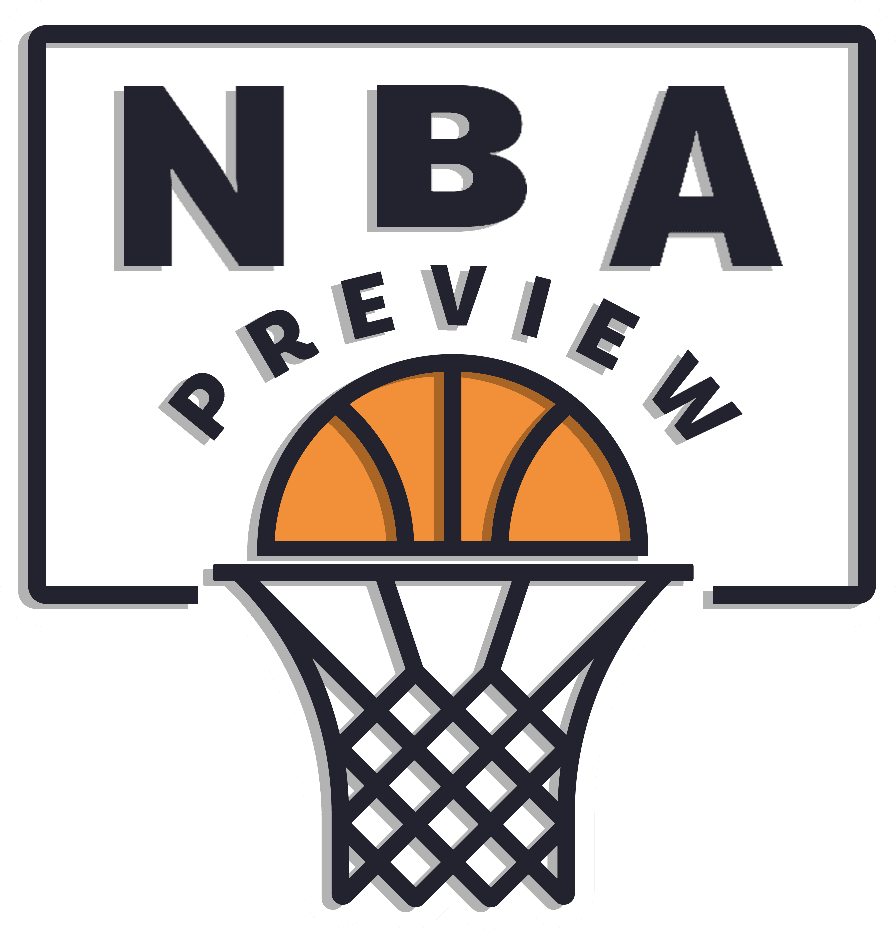With training camp less than one week away, it’s that special time of year for season predictions and player rankings. Each year, there are a few teams and players that go severely underrated. It can be difficult to guess who. No one could’ve predicted Victor Oladipo or Isaiah Thomas would make the quantum leaps they did in recent seasons, or that Paul Millsap would go from a solid rotation player to a four-time All-Star, but things like that happen annually.
It’s tough to predict a breakout. I had Brandon Ingram, D’Angelo Russell, and Rodney Hood listed last season as candidates to blossom. The trio missed a combined 79 games due to a collection of lower body injuries, which prevented them from making any massive leaps. (Hood did all he could to miss another chance in the playoffs against the Raptors.) The variables that impact a player’s development are endless, which is one reason—aside from pure randomness—we’re sometimes a year early or late making predictions.
Ingram, Russell, and Hood could very well break out this season because of their new roles and restored health, but this year’s list won’t include any repeats. Rookies and sophomores are also excluded. Here are eight players who could have a breakout season:
Khris Middleton, Bucks
Milwaukee’s destiny this season will be largely determined by how much its 17th-ranked defense can improve. But sometimes the best defense is a good offense. The Bucks’ seventh-ranked offense could make another leap this season with Mike Budenholzer now at the helm. Budenholzer’s system emphasizes ball movement and spacing, and the Bucks have made personnel changes to fit that ideal: They acquired Brook Lopez and Ersan Ilyasova, two floor-spacing bigs, over the summer. Coach Bud’s old Hawks annually ranked near the top of the NBA in 3-point attempts, unlike the Jason Kidd–led Bucks, who were perennially close to the bottom. More quality shooters in Milwaukee’s rotation will open the floor for Giannis Antetokounmpo, who is primed to have the best season of his career. But don’t forget about Middleton.
Fans who have kept tabs on the Bucks already know how good he is. Middleton averaged 20.1 points and started all 82 games last season, and then nearly sank Boston’s playoff run in a seven-game first-round series by shooting the lights out. But he’s an All-Star talent who’s never made an All-Star team, and this could be the season he receives that recognition. Isn’t that the definition of a breakout?
Playing under Budenholzer should lead to an uptick in 3-point attempts. Middleton has been one of the NBA’s most accurate shooters over his five seasons in Milwaukee, draining 39.1 percent of his 3-ball attempts, but he shoots them at a less frequent rate than his peers—he attempted only five per game last season. I’d love for the Bucks to empower Middleton with more scoring opportunities in the form of off-screen and dribble-handoff actions, both of which he’s excelled at over his career. Middleton is no Kyle Korver, but he is a marksman who needs to be fed more catch-and-shoot chances.
Middleton’s opportunities off the dribble shouldn’t decrease, though. The 27-year-old wing is capable of handling the ball, scoring in the pick-and-roll from deep, posting up, attacking the paint, and making basic passes. Budenholzer traditionally allows any capable player to bring the ball up the floor, so Middleton could receive more opportunity than he did last season. It’s not that Middleton will necessarily get better at specific skills like some of the younger players on this list, but he can do more of what he’s already good at. Along with Giannis’s exponential growth, Middleton’s ramped-up game might be enough to elevate the Bucks into elite territory in the East.
Taurean Prince, Hawks
I wasn’t a Prince fan before the 2016 draft; he was ranked 25th in my NBA draft guide that year because his poor shot selection, careless turnovers, and inconsistent shooting drove me nuts. The senior Baylor forward didn’t know how to play within himself, which often resulted in a failure to elevate his teammates. If an experienced senior is still making bad choices, it’s probably too late for his skill set to blossom. Right? Wrong.
Prince emerged in his sophomore season, making what The Ringer’s Danny Chau described as a “Jimmy Butler–esque leap.” The Hawks utilized Prince all over the floor. One possession he’d jump a passing lane and dribble the ball down the floor for a dunk. The next time up the floor, he’d set a down screen, then pop for a 3, similar to the play the Timberwolves used to run endlessly for Kevin Love. Minutes later, he’d run a pick-and-roll and whip a pass to a 3-point shooter. Prince may never become the next Jimmy Buckets, but there’s a path there for him to carve out a similar career as a two-way player.
Prince had a stellar final stretch of the season, in which he scored at least 20 points in 14 of his final 22 games. He wasn’t exactly efficient over the course of the season (54.9 true shooting percentage), but his steady progress was encouraging. The careless turnovers and shots became less frequent because he got rid of the blinders and started looking for teammates, or simply moved the ball within the flow of the offense. Prince started to take what was there instead of trying to have it all.
The key this season is for Prince to iron out his existing issues. Prince too often lost focus on defense, resulting in opponents driving or cutting by him for easy baskets. This was an even more prominent issue at Baylor, where he’d allow too many backdoor cuts or fail to make rotations in the team’s zone defense. Prince plays hard, but the production isn’t always there.
Prince shot 38.5 percent from 3 last season, and it’s possible that he made tangible progress as a shooter, but he needs to do it again this season to show it’s real. He also turned the ball over 27.3 percent of the time in pick-and-roll situations, which ranked near the bottom of the NBA, per Synergy. The fact he was even put in that role speaks volumes to how much the team values his progress, though; he was being thrown into the fire, but the experience is important. Now that pressure will be alleviated due to the presence of Trae Young and Jeremy Lin, both of whom should balance Prince’s offensive responsibility.
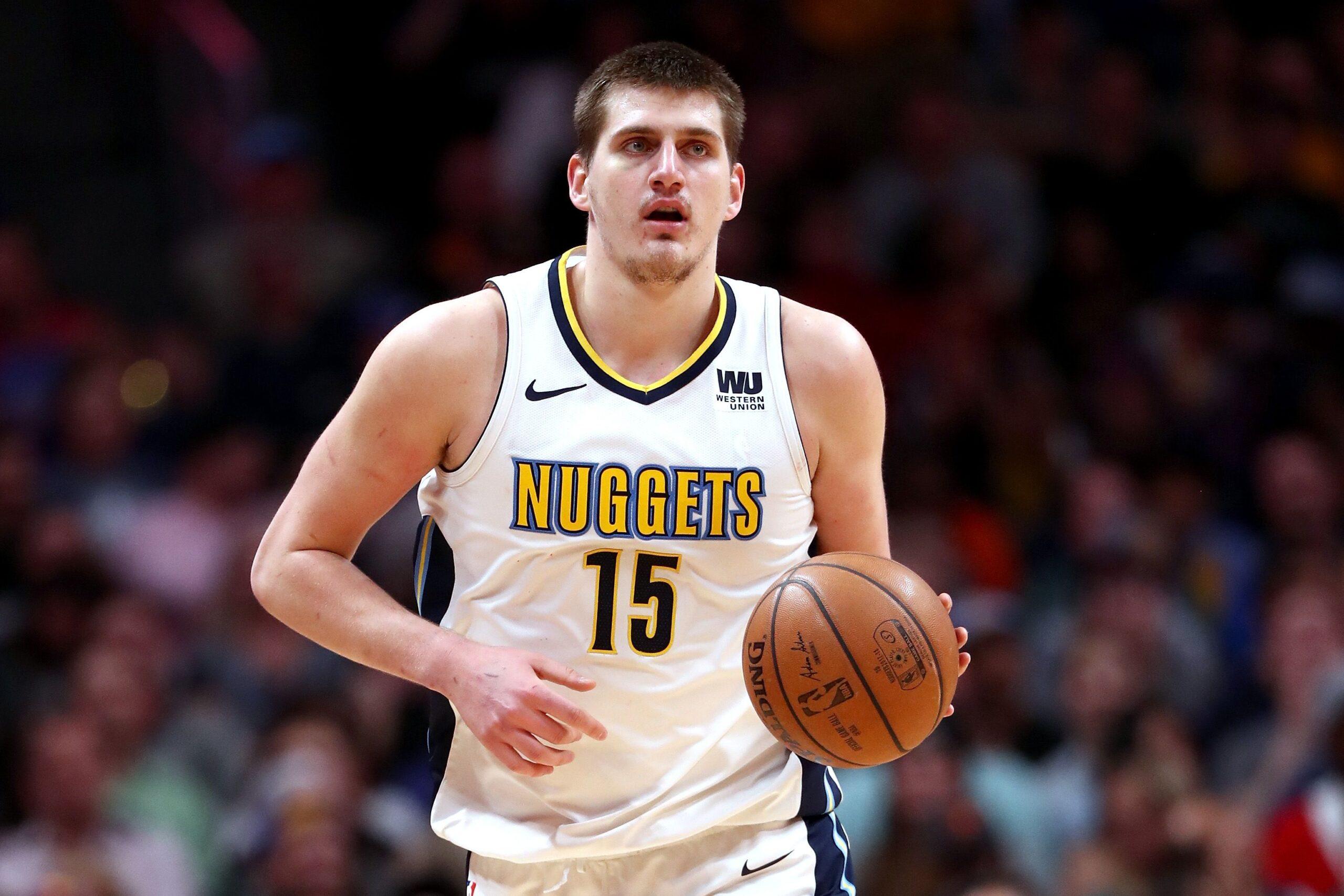
Nikola Jokic, Nuggets
You could make the argument that Nuggets guards Gary Harris and Jamal Murray should both be on this list. But their overlapping position, the return of Will Barton, and the presence of Isaiah Thomas all complicate the breakout equation for the Nuggets’ young backcourt duo. However, Jokic has a clear lane to receive Most Improved Player of the Year. He’s already the best passing center in the NBA, and one of the best rebounders and shooters at the position. If Jokic scores anything like he did to close last season while leading the Nuggets to the playoffs, he could even make an All-NBA team.
With the Nuggets pushing for a playoff berth, Jokic averaged 25.8 points with a 60.4 true shooting percentage over Denver’s final eight games, in which the team went 6-2. That was the culmination of a season in which he learned to be a much more assertive player: Jokic had averaged over 20 points per game since the end of January. Nuggets head coach Mike Malone ran more of the offense through his center, and he started scoring more without losing any efficiency.
Jokic already has advanced scoring touch inside the paint, whether he’s sealing off a defender after sprinting down the floor, or posting up. He can drain 3s off the catch, dribble into a jumper from midrange, or toss up floaters from the paint. There isn’t a spot on the floor that Jokic can’t score from, and if a shot isn’t available, there’s no center better at making a spectacular pass to a teammate.
The Nuggets rewarded Jokic this offseason for his immense offensive development and improved conditioning—though he could still stand to lose some of that pudge, just like Marc Gasol did—with a maximum contract worth $148 million over five years. By the end of last season, Jokic showed that he can carry the Nuggets offense by himself. Now he’s getting paid a salary that suggests he’s ready to do it full-time.
Myles Turner, Pacers
Remember last summer when Victor Oladipo got swole one month into the NBA offseason? Probably not. I didn’t care until the regular season when Oladipo made a leap and we learned that his training improved his flexibility and biomechanical range, which made him visibly more dynamic on the court. Oladipo’s teammate, center Myles Turner, is undergoing a similar physical transition turning from doughy to jacked while changing his diet and using yoga to improve his pliability.
Turner has always had skill: He was an elite high school recruit who had shooting range, natural instincts in the post, and rim-protection ability. Karl-Anthony Towns and Kristaps Porzingis are the premier bigs from the 2015 draft class, but Turner, drafted 11th, is good in his own right. He’s just never made the leap from good to great as a rebounder or an interior scorer, which is partially due to his lack of strength. The hope is the work he’s done this summer helps him make tougher plays, hold box-outs, and finish through contact. If it helps him even 75 percent as much as it did Oladipo, Turner might finally be in line for the type of season fans have been waiting for the past two years.
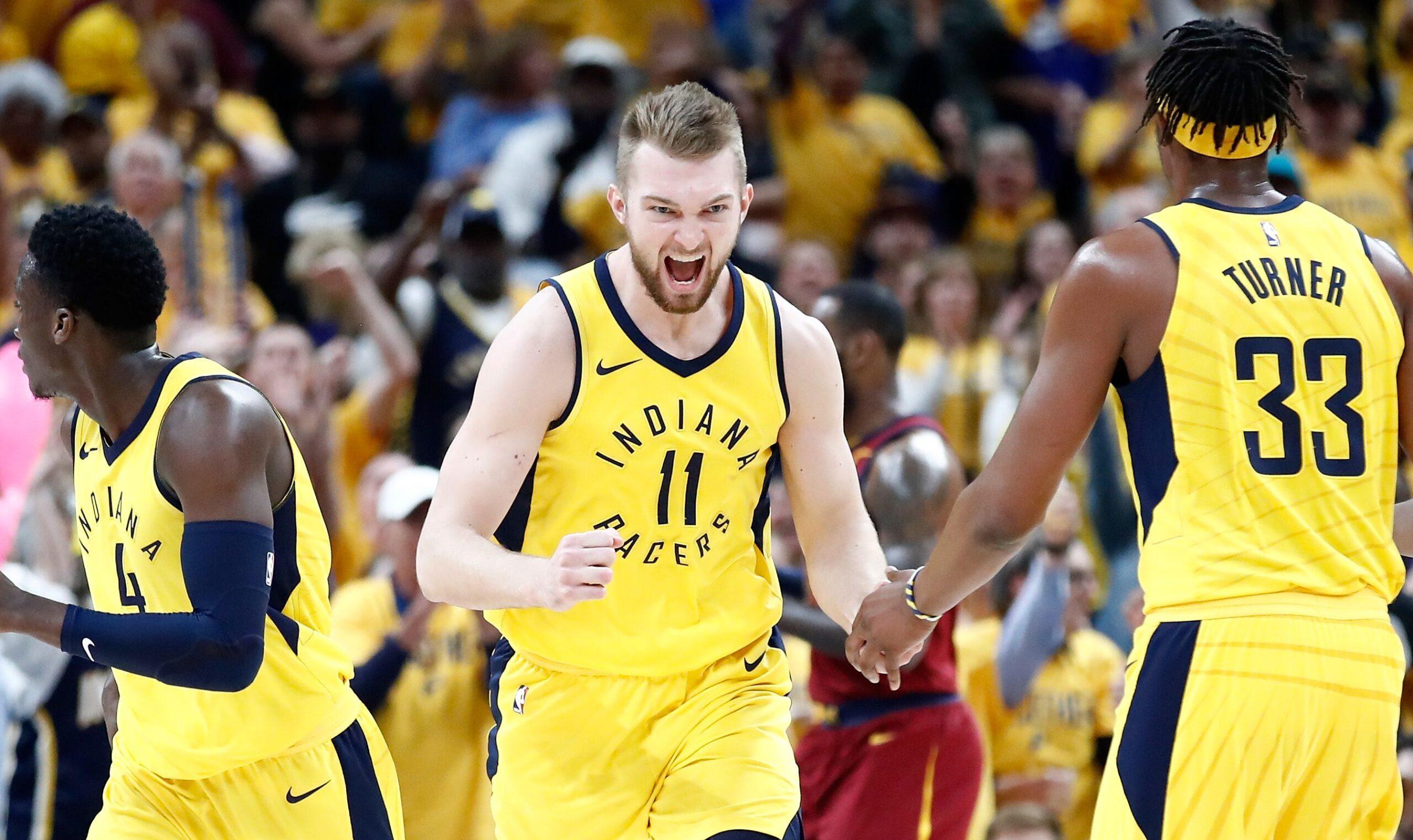
Domantas Sabonis, Pacers
If Turner doesn’t break out for the Pacers, then his teammate Domantas Sabonis will need to for the franchise to make a collective jump this season. Sabonis will anchor a reloaded Indiana bench unit that features newly signed playmaker Tyreke Evans and shooter Doug McDermott. That might not be as glamorous as a starting job, but maybe Sabonis could push for a finishing role. Though he was a reserve, he occasionally ended playoff games over Turner, depending on matchups.
Sabonis’s sophomore campaign was a far cry from his flopped rookie season with the Thunder. In Oklahoma City, he was used as a de facto spot-up shooter and played the type of shoddy defense you’d expect from an inexperienced rookie big man. After being part of the much-ridiculed package sent to Indiana for Paul George, Sabonis made considerable strides entering his sophomore season, getting much stronger and quicker. Suddenly, he was the Pacers’ best rebounder, and a player coaches could trust to do his job on defense. If he can avoid careless fouls moving forward, he’ll be able to stay on the floor for longer stretches.
Pacers head coach Nate McMillan also empowered Sabonis as a screener and cutter, which unlocked some of the finishing and playmaking ability scouts saw from him at Gonzaga. The next stage for Sabonis is to improve his off hand to become even more dynamic around the rim and in the post; as it is, he almost exclusively uses his left hand. In spite of his deficiencies, though, he dropped at least 20 points three times after the All-Star break last season. Minimal enhancements to his game can make those impact scoring nights more frequent.
Sabonis struggled as a spot-up shooter in Oklahoma City, but Indiana shouldn’t forget about his shooting. Sabonis shot 35.1 percent from 3 last season, but on only 37 attempts, a low number made more egregious by the 107 midrange shots he took from deeper than 16 feet, which he made only 34.6 percent of. The sooner Sabonis’s game catches up to math, the better: His 3-point attempts led to 1.05 points per shot, while his attempts from midrange garnered a not-so-nice 0.69 points per shot. When Sabonis sets a screen it makes zero sense for him to pop to 18 feet when he’s equally capable from 3. If it sounds like Sabonis is a more complete big man than Turner, it’s because he very well might be. The Pacers should start using him like it.
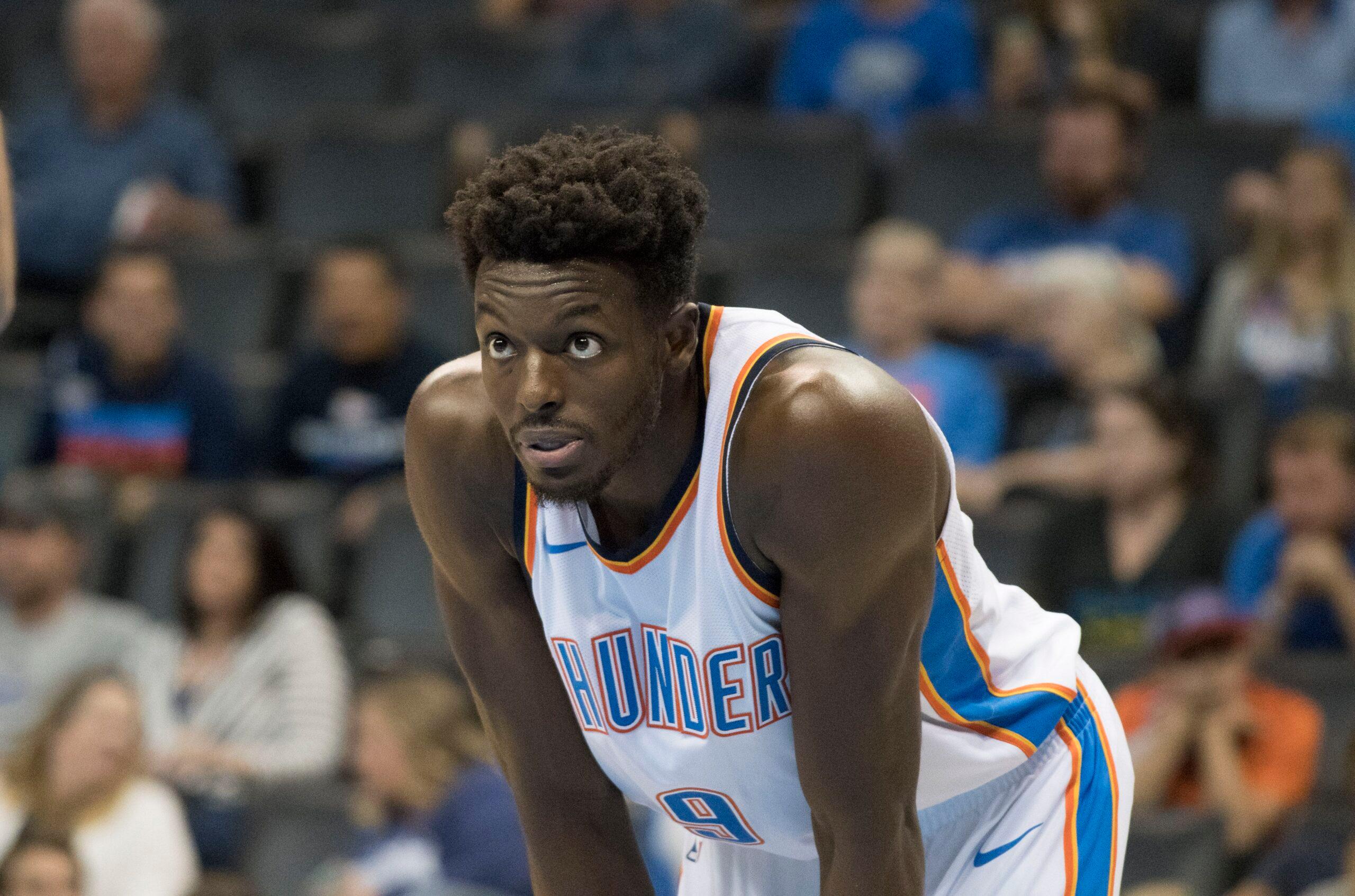
Jerami Grant, Thunder
In this switch-happy era of NBA basketball, teams can minimize the potential for mismatches by deploying as many players as possible who can match up equally well against any player—big or small, strong or fast. When a mismatch occurs on the floor, it can force the defense to rotate or help, and when that happens, open shots are soon to follow. There aren’t many players in the NBA who can switch across all positions on defense, but Jerami Grant is one of them. That’s why the Thunder re-signed the 24-year-old to a three-year, $27.4 million deal. Andre Roberson and Paul George were the pillars of Oklahoma City’s stellar defense last season. Grant’s versatility was the glue. Grant isn’t an elite defender like Roberson, but he’s strong and lengthy enough to defend taller players and quick enough to contain perimeter threats.
Thunder head coach Billy Donovan typically uses Grant at forward, but when center Steven Adams is off the floor he’s shown the ability to slide in as the small-ball 5. Things get interesting with Grant at center since he’s an explosive interior finisher who can hammer down lobs in the pick-and-roll, but also has the ability to operate on the perimeter.
Grant is a subpar 3-point shooter at 30.1 percent for his career, but that’s passable when he’s playing at the 5. Merely showing defenders that you’re comfortable behind the arc forces them to treat him differently, and he’s capable of attacking closeouts to make rotating defenders pay. Grant has worked on his shooting stroke this summer, and while there are no guarantees that he’ll progress, he’s already starting from a good place. With Carmelo Anthony now in Houston, Grant will have the opportunity to make a more significant two-way impact.
Julius Randle, Pelicans
It’s a pivotal season for Julius Randle. The beefy power forward signed a two-year, $17.7 million deal with a player option in the second season. It’s a fair cap hit for Randle, who, despite his progress, still can’t effectively space the floor, commits too many careless turnovers, and doesn’t defend consistently. But the glimmers of stardom are hard to ignore. A big payday could be in his future if he manages to put all the pieces together.
Randle is built like a tank, and because of his excellent mobility, he can slide with guards or stonewall bigs inside. Randle vacuums up rebounds, can handle the ball and make passes off the dribble, and can defend across every position on a good night. Though Randle will never be a true rim protector because of his stubby wingspan, versatility is king in today’s NBA. The problem is focus and awareness, just as it has been ever since he was a college freshman at Kentucky.
Maybe playing alongside Anthony Davis, the best teammate of his career (sorry, old Kobe Bryant), and first-team All-Defensive point guard Jrue Holiday on the perimeter will highlight his potential strengths on defense. Circumstances can make or break a player; perhaps New Orleans is just what Randle needs to make everything click. If Randle defends at a high level and continues to do all the other things he does well, it might be a good enough reason to opt out of his $9.1 million option for next season and get paid. If he manages to start shooting at an efficient clip, then his opt-out will be as good as guaranteed.
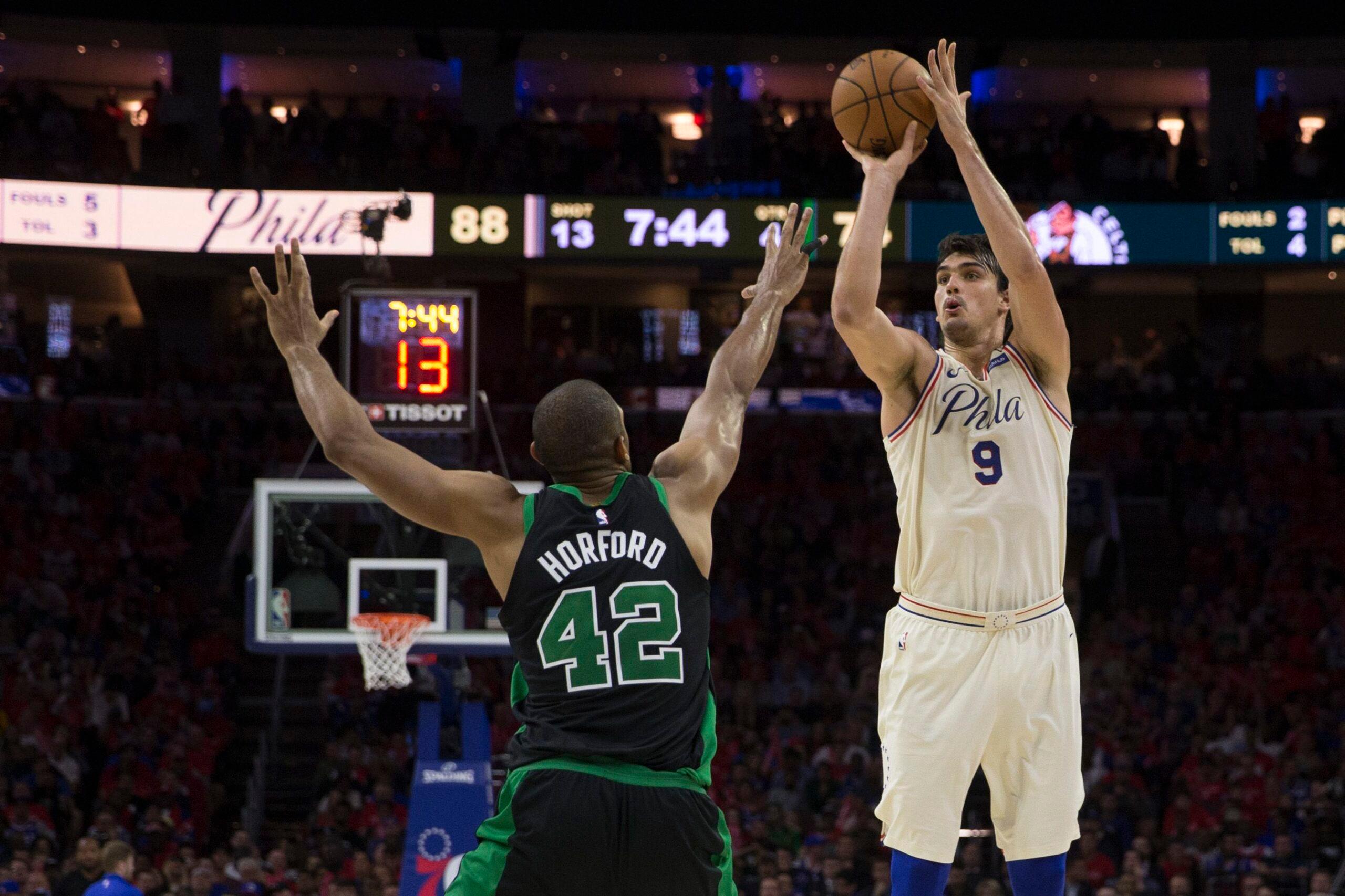
Dario Saric, 76ers
I’m a Saric stan of many years now. I felt there was an outside chance Saric would be the best player in the 2014 draft if Joel Embiid never stayed healthy, and I haven’t wavered from that feeling. If you were to redraft the class of 2014 right now, who do you think would definitely ahead of Saric in five years? Embiid if healthy, definitely. Jokic, yes. Other than that? Well, maybe Clint Capela, Aaron Gordon, and Gary Harris. Even then, it might be easy to argue Saric’s case.
After a slow start, Saric showed the league what he was capable of during his rookie season, averaging 17.9 points, 7.3 rebounds, and 3.2 assists over his final 30 games. He carried that into the 2017-18 season. Once Saric settled into his tweaked role due to the presence of Ben Simmons, the Croatian forward flaunted his multidimensional game. Saric is wise beyond his 24 years: He has a knack for getting timely rebounds, blocks, and buckets. There’s not a pass that he can’t make. And perhaps most importantly: While he’s not as integral to the Sixers as Embiid or Simmons, he accepts his role and excels no matter what he’s asked to do as a screener, cutter, or facilitator.
Saric might not receive enough opportunities to have a true breakout season; that may not come until he finds his way onto a team that can feature his true playmaking ability. But like he did from Year 1 to Year 2, Saric’s momentum from the postseason could carry over to this season. He was arguably the Sixers’ most reliable player in the playoffs: Saric attempted 14 shots per game and scored at least 20 points in five different games—including nights of 25 and 27 points in win-or-go-home games in the second round against the Celtics.
I wrote recently about how Markelle Fultz with a restored jumper could help make Simmons a more dynamic threat, since it could put Simmons in the role of a pick-and-roll screener. But I often wonder the same thing about Saric, who finished only 30 possessions as the pick-and-roll ball handler last season—six fewer than Fultz, who played in 14 games to Saric’s 78. It doesn’t look as smooth, but nothing Saric does is smooth. That’s part of the charm. He makes winning plays, and putting him in situations where he can attack off the dribble from the perimeter more like he did overseas could open up new dimensions of his game.
